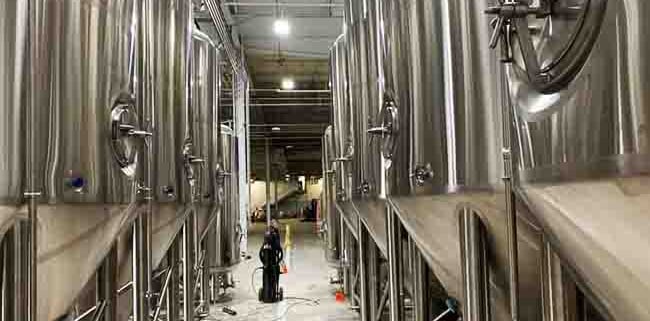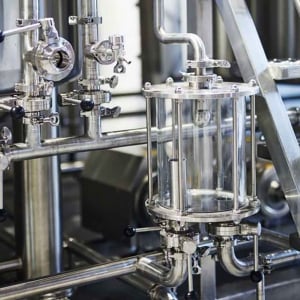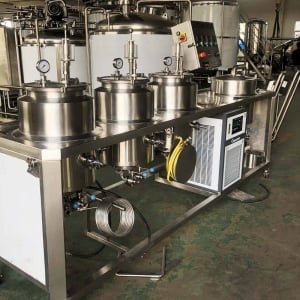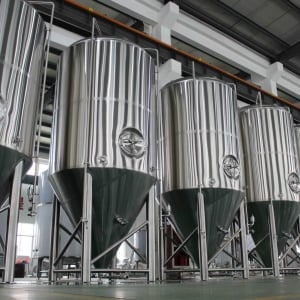Troubleshooting Common Issues with Beer Fermenters
Beer fermenters are the heart of brewing, transforming wort into the liquid gold we call beer. Whether you’re an aspiring homebrewer or a seasoned brewery owner, understanding fermenters is key to crafting the perfect pint. This guide covers every detail about beer fermenters, from types and troubleshooting to installation, operation, and supplier comparisons.
Overview of Beer Fermenters
Beer fermenters are specialized vessels where the magic of fermentation happens. They provide an environment for yeast to convert sugars into alcohol and carbon dioxide. These vessels come in various shapes, sizes, and materials, catering to the needs of different brewing scales—from hobbyists brewing a few gallons at home to commercial brewers handling thousands of barrels annually.
Key Features of Beer Fermenters
- Materials: Stainless steel, glass, or plastic.
- Shapes: Cylindrical, conical, or flat-bottom.
- Capacity: Ranges from a few liters to hundreds of gallons.
- Customization: Options include cooling jackets, pressurization capabilities, and automated controls.

Troubleshooting Common Issues with Beer Fermenters
Fermenting beer isn’t without its challenges. Let’s dive into some common problems and their solutions.
1. Temperature Control Issues
Temperature is critical for proper fermentation. If your fermenter doesn’t maintain the right temperature:
- Solution: Invest in fermenters with integrated cooling or heating systems. For DIY fixes, use a temperature regulator or wrap the fermenter with insulating materials.
2. Inconsistent Fermentation
Sometimes fermentation may stall or fail to start.
- Solution: Check your yeast’s viability and pitch rate. Aerate the wort adequately and ensure the fermenter is clean to avoid contamination.
3. Leaks or Pressure Build-Up
Leaks can result in oxygen exposure, while excessive pressure may damage the fermenter.
- Solution: Inspect gaskets and seals before each use. Consider pressure relief valves for conical fermenters.
4. Contamination
Bacterial or wild yeast contamination ruins batches.
- Solution: Sanitize fermenters thoroughly before use, and store them in a clean environment.
The Beer Brewing Process in Fermenters
Fermenters play a pivotal role in the brewing process. Here’s how:
- Wort Transfer: After boiling, cooled wort is transferred into the fermenter.
- Yeast Pitching: Yeast is added to kick-start fermentation.
- Primary Fermentation: Yeast metabolizes sugars, producing alcohol and CO₂ over several days to weeks.
- Secondary Fermentation (Optional): Beer is transferred to another vessel for conditioning, clarifying, or flavor enhancement.
- Carbonation and Packaging: The finished beer is carbonated, either naturally or artificially, and packaged.
Comparison of Beer Fermenter Options
Beer Fermenter Types and Their Features
| Type | Capacity Range | Material | Design Features | Best For |
|---|---|---|---|---|
| Glass Fermenters | 1 to 20 gallons | Glass | Clear visibility, non-reactive, heavy and fragile | Homebrewers |
| Plastic Fermenters | 1 to 30 gallons | Food-grade plastic | Lightweight, affordable, prone to scratches | Beginners, small batches |
| Stainless Steel | 5 to 1000+ gallons | Stainless steel | Durable, easy to clean, customizable | Professionals, large-scale |
| Conical Fermenters | 5 to 1000+ gallons | Stainless/plastic | Allows sediment removal, pressurization available | All scales |
Supplier Comparisons and Pricing
| Supplier | Specializations | Price Range | Customization Options |
|---|---|---|---|
| BrewTech | Conical and stainless options | $300 – $10,000+ | Cooling jackets, pressure kits |
| Spike Brewing | Home and commercial models | $500 – $20,000+ | Fully automated systems |
| Ss Brewtech | Advanced brewing equipment | $350 – $15,000 | Modular designs |
| Grainfather | Compact, integrated systems | $200 – $2,000 | Homebrewing specific features |
Installation, Operation, and Maintenance of Beer Fermenters
| Aspect | Steps/Details |
|---|---|
| Installation | Position on a stable surface, connect temperature controls, seal all fittings. |
| Operation | Monitor temperature, pressure, and fermentation progress daily. |
| Maintenance | Clean with non-abrasive materials, sanitize regularly, replace worn gaskets. |
How to Choose the Right Supplier
Factors to Consider
- Reputation and Reviews: Check online feedback and brewer testimonials.
- Customization Needs: Choose suppliers offering the features you need.
- Budget: Compare price points and financing options.
- After-Sales Support: Look for suppliers with robust warranties and technical support.
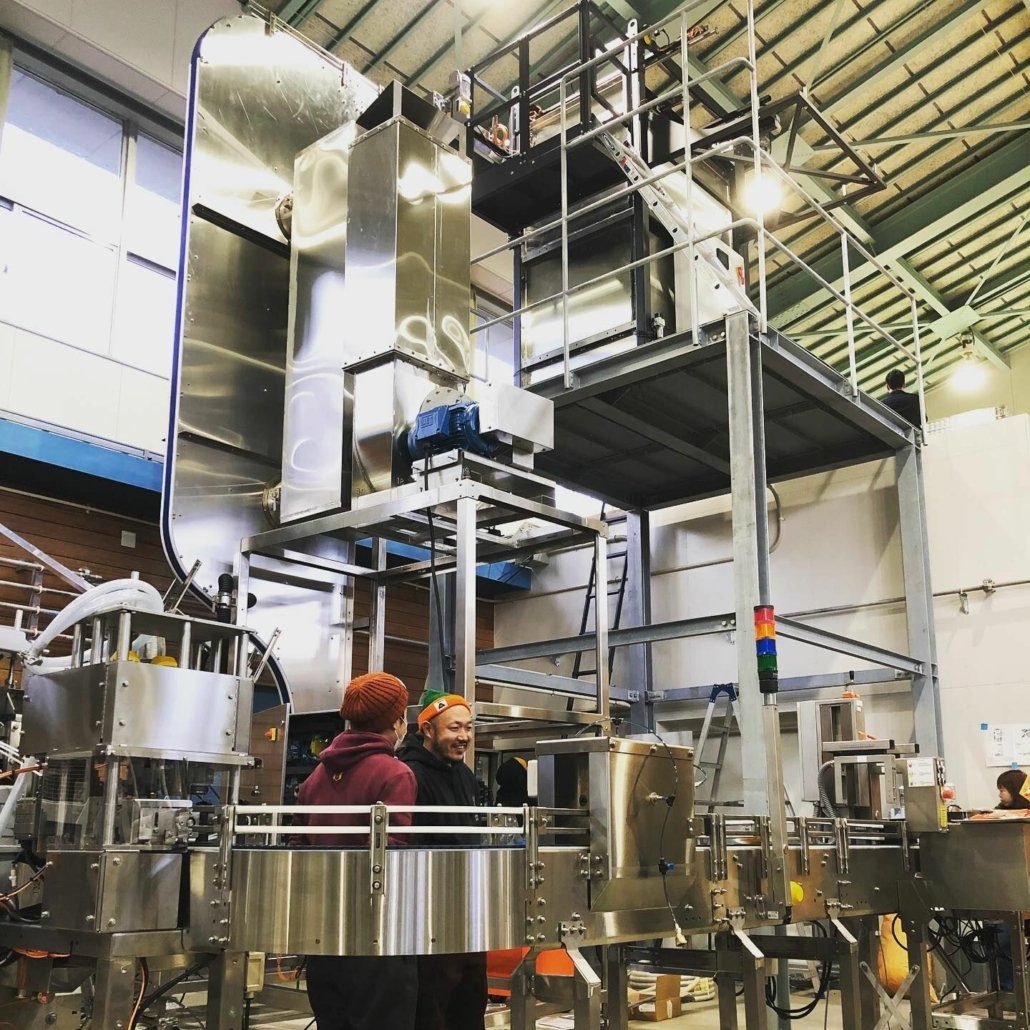
Advantages and Limitations of Beer Fermenters
Advantages
- Glass Fermenters: Inert material, easy to clean, affordable.
- Plastic Fermenters: Lightweight, beginner-friendly.
- Stainless Steel: Long-lasting, professional-grade features.
- Conical Fermenters: Simplifies sediment removal and secondary fermentation.
Limitations
- Glass Fermenters: Fragile and heavy.
- Plastic Fermenters: Scratches can harbor bacteria.
- Stainless Steel: High upfront cost.
- Conical Fermenters: Requires more space and investment.
FAQ
| Question | Answer |
|---|---|
| What size fermenter should I buy? | It depends on your brewing scale. Homebrewers often use 5-20 gallon fermenters, while commercial brewers need much larger capacities. |
| Are plastic fermenters safe for beer? | Yes, but ensure they’re food-grade and free from scratches that could harbor bacteria. |
| How do I clean a stainless steel fermenter? | Use non-abrasive cleaning agents and avoid harsh chemicals that may corrode the surface. |
| Do I need a conical fermenter? | Not necessarily. They’re ideal for removing sediment easily but may not be essential for beginners. |
| Can fermenters be reused? | Absolutely, with proper cleaning and maintenance, fermenters can last for years. |

